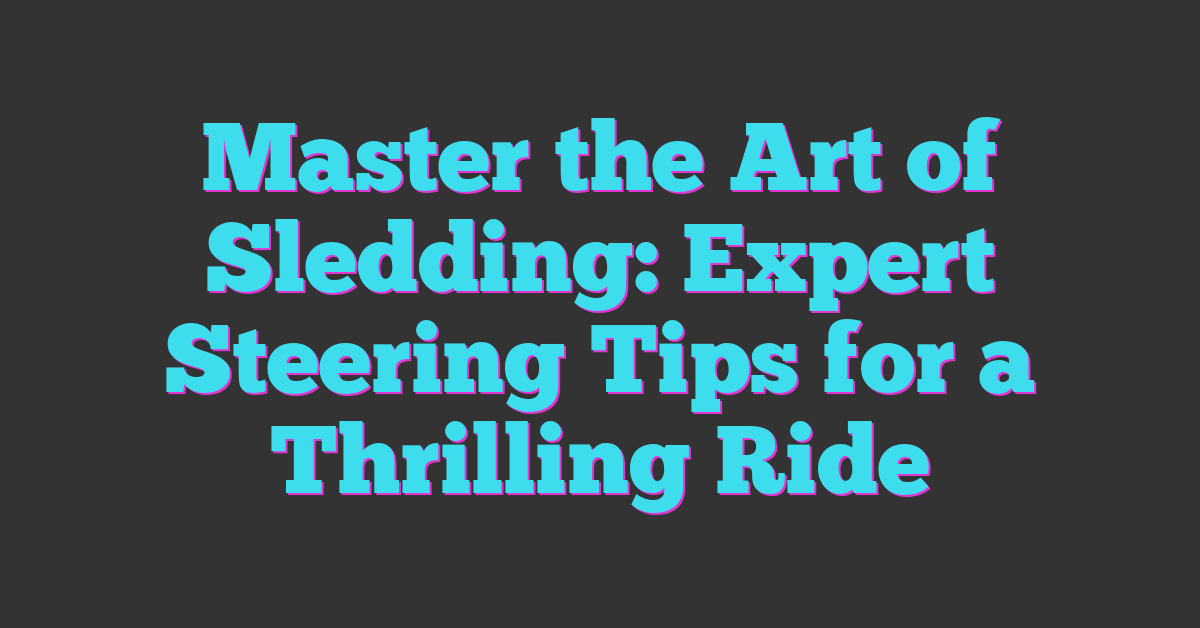When it comes to snowboarding, balance is everything. Whether you’re carving down the slopes or catching air off a jump, maintaining your stability can make all the difference between a smooth ride and a wipeout. If you want to elevate your skills and enjoy your time on the mountain, focusing on balance is key.

Importance Of Balance In Snowboarding
Balance plays a vital role in your snowboarding experience. Proper balance enables you to carve down slopes smoothly and execute jumps with precision. Without solid balance, maintaining control and executing your moves becomes challenging.
Flexibility and strength in your core, legs, and feet enhance your balance on the board. These attributes support quick adjustments to changes in terrain and speed, improving stability. You can navigate diverse conditions more effectively when your balance is strong.
Additionally, improving your balance translates to increased confidence. When you feel secure on your board, you’re likely to attempt more complex maneuvers and challenge yourself on varied runs. This commitment to pushing your limits ultimately leads to greater enjoyment on the mountain and personal growth in your snowboarding skills.
Key Concepts Of Balance
Balance plays a pivotal role in your snowboarding experience, influencing everything from your carving technique to the tricks you’re able to perform. Understanding balance concepts can boost your confidence and help you tackle various slopes with ease.
Static Balance
Static balance refers to your ability to maintain stability while remaining still. This skill is essential when you’re waiting for the next run or positioning yourself before a jump. You can enhance your static balance through various practices.
- One-legged stance: Stand on one leg for 30 seconds to improve your core and leg strength.
- Toe and heel balance: Shift your weight from your toes to your heels, which emphasizes control over the board.
- Balance board: Use a balance board at home to simulate the sensations of riding and build stability.
Dynamic Balance
Dynamic balance involves maintaining stability while in motion, crucial for navigating slopes and performing tricks. This skill prepares you for the constant changes in terrain.
- Carving drills: Practice carving turns on gentle slopes to develop strong observation and weight distribution.
- Edge transitions: Switch between heel and toe edges rapidly while maintaining your speed to enhance your agility.
- Jump landings: Work on landing softly and stabilizing your body after jumps to improve your landing control.
Integrating both static and dynamic balance drills into your routine can lead to overall improvement in your snowboarding skills.
Effective Snowboarding Drills For Balance
Improving your balance on the slopes makes a massive difference in your snowboarding experience. Strong balance leads to smoother rides, better control, and more fun. Here are some effective drills to enhance your balance.
One-Legged Stance Drills
One-legged stance drills help you build static balance. Stand on one leg while shifting your weight. Aim for at least 30 seconds per leg. For added challenge, close your eyes or perform gentle movements with your free leg. Incorporate this into your routine before heading out; it prepares your body for the dynamics of snowboarding.
Balance Board Exercises
Balance boards mimic the instability of snowboarding, making them excellent training tools. Stand on the board, keeping your knees slightly bent and your core engaged. Try shifting your weight from side to side, or perform squats while balancing. Start with simpler movements and progress to more complex maneuvers, boosting your stability on the board when you hit the slopes.
Edge Control Drills
Edge control drills improve dynamic balance necessary for navigating slopes. Practice carving by making sharp turns while maintaining your weight over the board’s edges. Set up a series of cones or markers on a flat area to navigate through. This technique sharpens your reflexes and reinforces body position, making it easier to manage various terrains.
Slalom Drills
Slalom drills focus on quick weight shifts while improving your turning abilities. Set up a series of gates or cones spaced out over a moderate distance. Weave in and out, relying on your edge control and balance. This exercise teaches you to adjust your body well to changing directions and makes riding more fluid, enhancing your overall performance on the mountain.
Progress Tracking And Improvement
Tracking your progress in snowboarding drills for balance boosts motivation and ensures steady improvement. Keeping a record of your training sessions helps you identify strengths and areas that need work.
- Journaling Sessions: Write down each drill you perform, focusing on duration, repetitions, and any notable feelings. Note feelings of balance, coordination, or stability during each drill.
- Video Analysis: Record your practice sessions. Watching yourself snowboard reveals how well you maintain balance during movements. Analyze areas of improvement, focusing on how your body shifts and maintains stability.
- Set Specific Goals: Create measurable objectives for each balance drill. For example, aim to hold a one-legged stance for 30 seconds or complete ten slalom turns with controlled weight shifts. Clear targets enhance motivation.
- Regular Assessments: Schedule periodic evaluations to analyze your progress. Use a mix of self-assessment and feedback from peers or instructors. Adjust your training regimen based on these evaluations to address specific balance challenges.
- Compare Conditions: Practice drills across varying terrain and conditions. Review your performance in powder, groomed runs, and icy slopes to see how environmental changes affect your balance. This insight will help develop adaptability on the board.
Embracing these methods fosters a deeper understanding of your balance capabilities and promotes continuous growth in your snowboarding journey. With consistent tracking and reflection, you’ll notice substantial improvements that enhance your overall snowboarding experience.
Conclusion
Improving your balance on the slopes can transform your snowboarding experience. By incorporating both static and dynamic drills into your routine you’ll not only enhance your skills but also boost your confidence. The more you practice these exercises the more comfortable you’ll feel tackling various terrains and attempting new maneuvers.
Remember to track your progress and celebrate small victories along the way. Each session is an opportunity to learn and grow. Embrace the journey and enjoy every moment on the mountain. With dedication and the right drills you’ll find yourself carving with ease and landing tricks like a pro. Happy riding!










